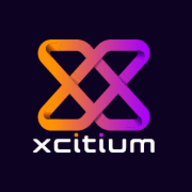

Cortex XDR by Palo Alto Networks and Comodo Advanced Endpoint Protection compete in the cybersecurity market. Cortex XDR appears to have the upper hand due to its robust integration capabilities and comprehensive security management.
Features: Cortex XDR integrates network, endpoint, and cloud data for threat detection and response. It offers comprehensive security management and robust integration capabilities. Users find its holistic approach advantageous. Comodo Advanced Endpoint Protection has advanced endpoint containment, security layers, and targeted endpoint features, providing significant value in specific scenarios.
Room for Improvement: Cortex XDR could improve its reporting capabilities, configuration processes, and usability. Comodo needs better integration with third-party tools, enhanced automated responses, and improved ecosystem interoperability.
Ease of Deployment and Customer Service: Cortex XDR users report straightforward deployment, extensive documentation, and good support. Comodo's deployment is rapid and efficient with effective customer service. Cortex XDR's seamless integration across security layers gives it an edge in complex scenarios.
Pricing and ROI: Cortex XDR is more expensive but provides substantial ROI through comprehensive security coverage. Comodo is cost-effective with strong endpoint protection. Users feel Cortex XDR justifies its higher price with broader features and better long-term security ROI.
Without this type of solution, work becomes hampered and files become inaccessible.
They appreciate the rich telemetry data from the solution, as it provides in-depth threat identification.
I have seen a return on investment with Cortex XDR by Palo Alto Networks, as this product is offered at a minimal cost, and we can find a good ROI from it.
Customer support is generally satisfactory but could be improved, especially in terms of response time.
They did well with handling high-risk threats.
Their support is efficient and responsive whenever I raise a ticket through my portal.
Every vendor has similar support; it depends on how the case is handled and raised.
When deploying on old PCs, servers, or laptops, optimal performance cannot be expected.
The stability of Comodo Advanced Endpoint Protection is rated at ninety-five to ninety-seven percent.
Cortex XDR is stable, offering high quality and reliable performance.
All the situations and issues were controlled in a good way by Cortex XDR by Palo Alto Networks.
For the last 11 months, we haven't faced any outage issues, so it is a stable product.
The main areas for improvement are support responsiveness and the additional enhancement with the DLP integration.
Comodo Advanced Endpoint Protection could improve by extending its auto containment feature to Mac and Linux systems since it currently only supports Windows.
The inclusion of this feature would allow the application of DLP policies alongside antivirus policies via a single agent and console, making it more competitive as other OEMs often offer DLP solutions as part of their antivirus products.
If the per GB data could be provided at a certain level free of cost or at the same cost which the customer is taking for the entire bundle, that would be better.
Cortex XDR could improve its sales support team, including better commission structures and referral programs.
Pricing is competitive and considered average compared to other solutions.
Compared to competitors such as CrowdStrike and Sophos, the pricing of Cortex XDR by Palo Alto Networks is similar to CrowdStrike but more expensive than Sophos.
Cortex XDR is perceived as expensive by some customers, yet offers dynamic pricing.
It includes an auto containment feature, ensuring files and folders remain secure.
If anything happens or any suspicious activities are detected, an alert is generated, allowing for quick response.
The product provides automation responses in case of a threat attack, severity assessments, centralized manageability, and comprehensive compliance features, resulting in reduced costs.
It incorporates AI for normal behavior detection, distinguishing unusual operations.
The way the cases used to collect the data is not intrusive, permitting the infrastructure to collect the data and send it to the Data Lake without problems.
| Product | Market Share (%) |
|---|---|
| Cortex XDR by Palo Alto Networks | 3.7% |
| Comodo Advanced Endpoint Protection | 0.4% |
| Other | 95.9% |


| Company Size | Count |
|---|---|
| Small Business | 15 |
| Midsize Enterprise | 1 |
| Large Enterprise | 1 |
| Company Size | Count |
|---|---|
| Small Business | 41 |
| Midsize Enterprise | 18 |
| Large Enterprise | 36 |
Comodo Advanced Endpoint Protection (AEP) delivers patent-pending auto-containment, where unknown executables and other files that request runtime privileges are automatically run in a virtual contain that does not have access to the host system's resources or user data.
Cortex XDR by Palo Alto Networks delivers comprehensive endpoint security, integrating well with other systems to offer robust threat detection and real-time protection through AI-driven analytics.
Cortex XDR by Palo Alto Networks offers advanced endpoint protection and threat detection through AI and behavior-based analytics. Its user-friendly design simplifies integration with firewalls, delivering multi-layered protection with low resource consumption. Valued for policy management, USB control, and incident correlation, Cortex XDR enhances threat management and real-time threat hunting capabilities. However, users note challenges with third-party integration, reporting, and dashboard automation. Agent performance across operating systems and memory consumption are areas for improvement, alongside reducing false positives and simplifying endpoint management and setup.
What features does Cortex XDR offer?
What benefits should be considered in reviews?
Cortex XDR is crucial in industries requiring robust endpoint protection, such as finance, healthcare, and technology. It supports malware detection, behavioral analysis, and ransomware mitigation across endpoints, including remote work environments, providing comprehensive threat visibility and security policy management. The solution's integration with firewalls and specialized industry requirements enhances security posture in diverse operational settings.
We monitor all Endpoint Protection Platform (EPP) reviews to prevent fraudulent reviews and keep review quality high. We do not post reviews by company employees or direct competitors. We validate each review for authenticity via cross-reference with LinkedIn, and personal follow-up with the reviewer when necessary.